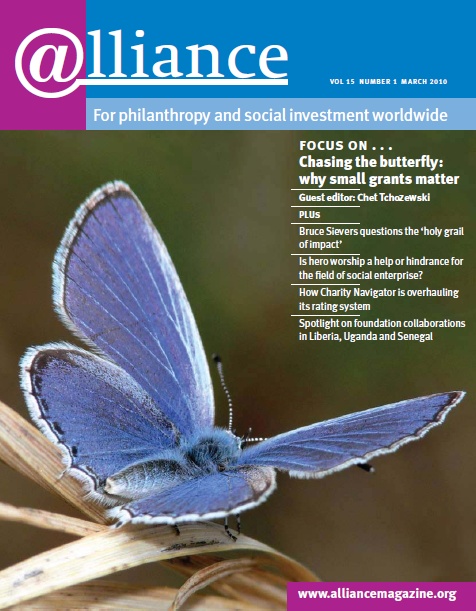If you’ve ever sat through to the end of a bad movie simply because you didn’t want to ‘waste’ the money you spent on the ticket, you’re not alone. Many people assume that paying for something will make you more likely to use it, while items given away for free are undervalued and less likely to be used. These seemingly harmless assumptions have a big impact on current debates over how health products should be delivered to the poor.
 They underlie the theory that cost sharing, or charging a subsidized (but non-zero) price for health goods, improves the likelihood of their use and also reduces waste by screening out those less likely to use the product. There are prominent voices on both sides of the debate: the Acumen Fund has invested in businesses that provide anti-malarial bednets through commercial channels, for example, while Jeffrey Sachs has voiced support for free distribution. Two studies by Innovations for Poverty Action Research Affiliates in Africa tested whether these assumptions hold true in practice.
They underlie the theory that cost sharing, or charging a subsidized (but non-zero) price for health goods, improves the likelihood of their use and also reduces waste by screening out those less likely to use the product. There are prominent voices on both sides of the debate: the Acumen Fund has invested in businesses that provide anti-malarial bednets through commercial channels, for example, while Jeffrey Sachs has voiced support for free distribution. Two studies by Innovations for Poverty Action Research Affiliates in Africa tested whether these assumptions hold true in practice.
Waterborne illnesses affect many people living in the developing world, and one popular method to avoid them is using at-home water treatments. In Zambia, Nava Ashraf, James Berry and Jesse M Shapiro studied the implications of charging subsidized prices for one such product called Clorin.[1] As part of the project, 1,004 households were offered the product for a price that was randomly varied. After agreeing to the price, households were then given an additional, randomly chosen, discount. The goal was to test two possible reasons why people may use a product more when they have paid a higher price. One hypothesis is that people who are already more likely to use a product agree to higher (pre-discount) offer prices. Alternatively, it could be that having paid a higher (post-discount) price makes you more likely to use the product.
Results indicated that charging higher prices screened out households that were less likely to use the product. Those that agreed to higher pre-discount prices were more likely to have used it two weeks after purchase. However, the researchers also found that the post-discount price actually paid, once users had been screened on willingness to pay, did not consistently affect usage: those who paid less for their Clorin, conditional on what they were willing to pay, were not less likely to be using it at follow-up than those who paid more.
Another study looked at the use of long-lasting insecticide-treated bednets in Western Province, Kenya. Malaria threatens the lives of people in many developing countries, and the use of these bednets is a proven way to protect against infection. Jessica Cohen and Pascaline Dupas sought to determine how the price of bednets affects demand and use.[2] They worked with 20 prenatal clinics, which were randomly assigned a price at which they could offer bednets to their clients. On some days, women were also entered into a draw to receive an additional discount.
Here, Cohen and Dupas found no consistent evidence that paying a zero price for a bednet made households less likely to use them. More importantly, the researchers found that raising the offer price from zero to $0.75 (or from a subsidy of 100 per cent to 87.5 per cent) decreased take-up of the product by 75 per cent. The data suggest that higher prices decreased demand for both healthy and ill women. Pregnant women who purchased bednets were not less healthy at the time of purchase than women in the comparison group.
What’s behind the difference in how higher prices affect usage in these studies is not clear-cut. There are notable differences, including variations in the study design (unlike in the Kenya study, no Clorin was offered for free in the Zambia study, for example) as well as differences in the types of products being distributed and the country contexts.
But the studies do converge in one area: neither finds strong evidence that paying a higher price induces greater usage. While it may be tempting to assume that items provided for free will be undervalued, these studies demonstrate the importance of questioning that assumption, particularly for well-known items. Further research in different contexts is needed to explain the differences and to better understand the range of situations in which cost sharing has critical downsides. In order to advance this goal, programmes that currently employ a cost-sharing approach for the provision of health products should consider piloting free distribution schemes.
1 Nava Ashraf, James Berry and Jesse M Shapiro, ‘Can Higher Prices Stimulate Product Use?’ American Economic Review, forthcoming.
2 Jessica Cohen and Pascaline Dupas, ‘Free Distribution or Cost-Sharing? Evidence from a Randomized Malaria Prevention Experiment’, Quarterly Journal of Economics, forthcoming.
Kerry J Brennan and Daniel S Tello are project associates at Innovations for Poverty Action. Emails kbrennan@poverty-action.org and dtello@poverty-action.org





Comments (0)